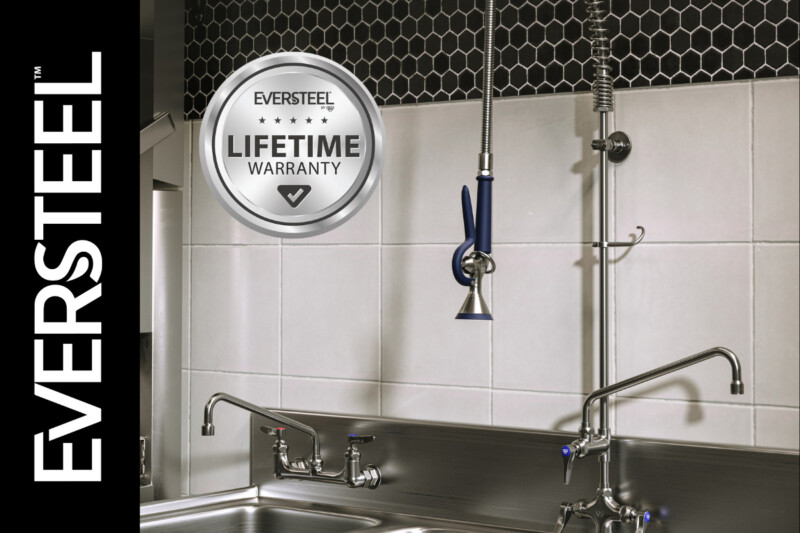What’s New With Cube Ice Machines
Cube ice machines support many applications, and more models now come with safety features and designs that makes them simple to clean.

It’s still amazing how much thought goes into something as simple as ice-making. These days, some operators tout their style of ice as a differentiator from others in the segment. But for all its possible shapes and sizes, the ice that the vast majority of restaurants use is the standard cube in all its permutations—making the hardworking ice machines that produce them practically a kitchen staple.
If you install an ice machine in a hot kitchen, consider upsizing the model you specify.
Midsize cube ice machines are even more popular now as a result of their flexibility. (Midsize cubers typically produce ice at 500 lb./24 hr. to 1,200 lb./24 hr. at 70°F air/50°F water.) Depending on the cube size and style (full or half dice, cube or crescent), cubers can supply ice for beverage service, bar service, cold food displays and holding, cooling hot food and even bagging. Small enough to fit in tighter spaces—some models are only 22-inches wide—midsize machines can supplement your existing ice production, or replace an older, larger machine with multiple units in more locations. And, since some models are now stackable, you can get two or three times as much ice in the same footprint.
Along with flexibility, the latest crop of midsize cube ice machines also offers more models with advanced safety features and designs that make them simple to clean. Ice is food, and while food safety is always top of mind for operators, it’s been especially critical during this past pandemic year.
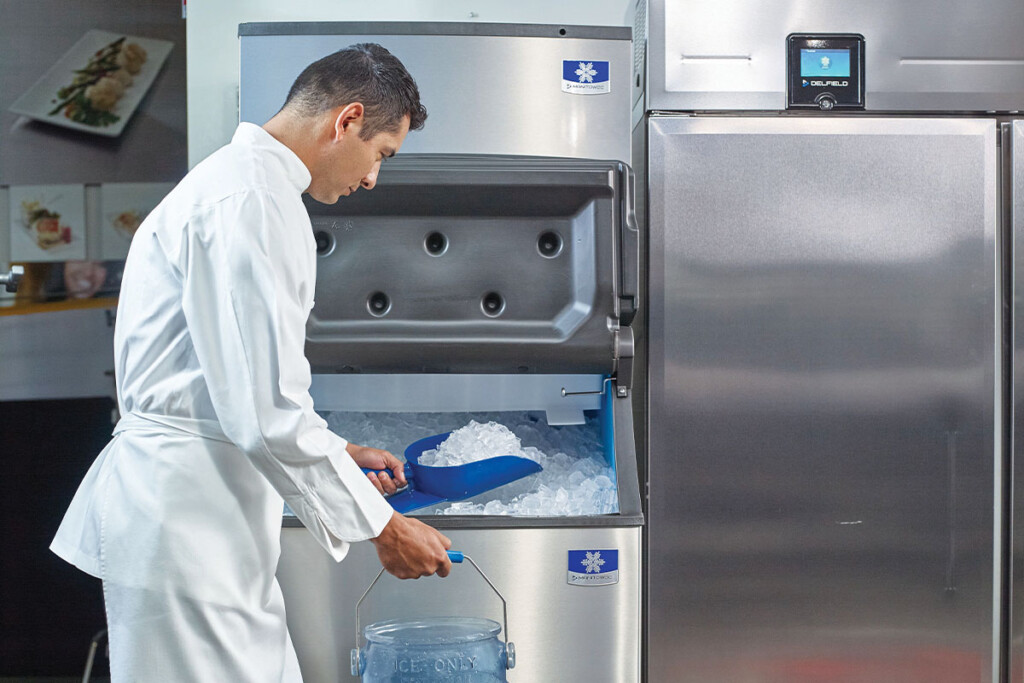
Employees use ice all day. The latest machines come with preventative diagnostics for reliable ice production. Courtesy of Manitowoc
Making Pure Ice
Unlike the cube ice maker in your refrigerator that fills a tray with water and freezes it, com-mercial cube ice machines direct water onto an evaporator shaped like a large ice cube tray and freeze it a little at a time.
Depending on the make and model, ice machine evaporators mount either vertically or horizontally. Those with vertical evaporators have a water dispensing tube at the top that creates a waterfall effect. As the water flows into and out of each cell in the evaporator more is frozen until the cells fill with completely frozen ice. A hot gas cycle defrosts the evaporator just enough to release the cubes into the bin (or ice dispenser) below.
On models with a horizontal evaporator, the “ice tray” mounts upside down, and water either moves through a hole in the top of each cell where it cascades down all four walls, or sprays into the cells from below. Again, the water slowly freezes in increments until the cells fill completely with ice.
Because pure water freezes more quickly than water with impurities such as minerals, the evaporator fills with pure ice. The impurities flow with the water into a reservoir below the evaporator. At the end of each cycle, the water with all the impurities remaining in the reservoir flushes down a drain.
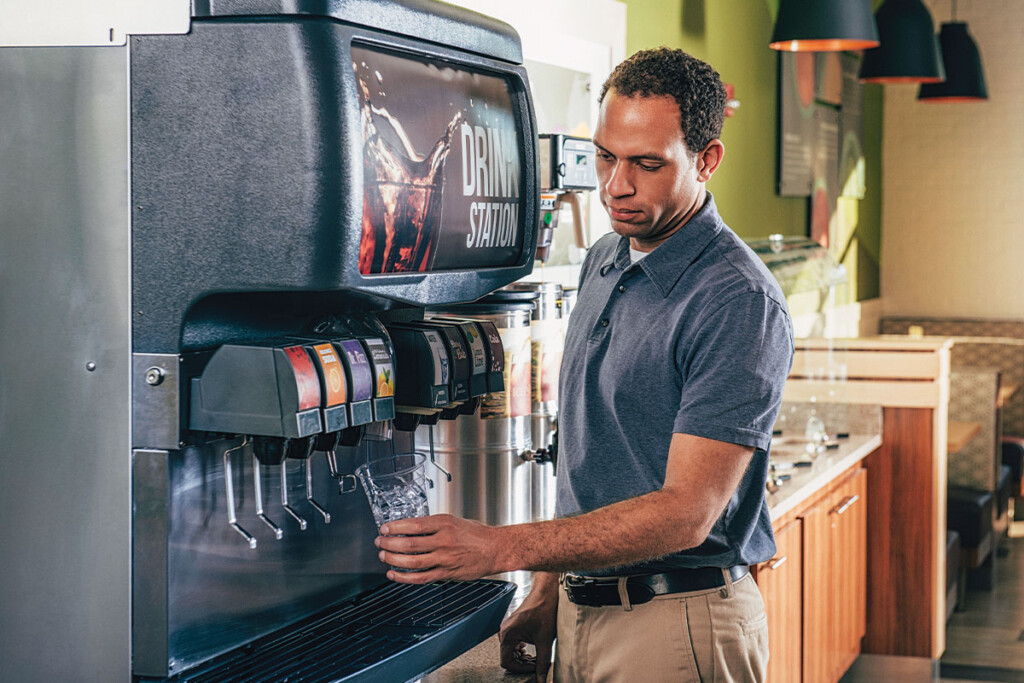
Think about all the ways—from the beverage area to kitchen—you use ice when estimating daily requirements. Courtesy of Scotsman.
Built for Safety
While many of the safety features on ice machines have been around for years, manufacturers offer more of them on more models. Some are standard, but others are still optional, so be sure to check.
Antimicrobial parts. Plastic parts infused with an antimicrobial, typically ionized silver, resist mold, mildew and bacterial contamination, helping the interiors of ice machines stay cleaner longer. Most manufacturers use at least some antimicrobial parts.
UV light. Ultraviolet light in the ice-making head kills virtually all microbials, including COVID-19, keeping incoming air from contaminating ice, and preventing mold and mildew. Some manufacturers offer this feature.
Ozone. Another effective antimicrobial, ozone-treated water in the ice machine also prevents mold, mildew, bacteria and viruses from affecting ice quality and safety without altering taste or odor. A couple of manufacturers offer this feature—a device that attaches to the incoming water line—under different trademark names.
Auto-cleaning. Many if not most models have one-button auto-cleaning cycles. When it’s time to start a cycle, an employee simply adds either a descaling or cleaning chemical, typically in premeasured bottles, to the water trough in the machine and presses the cycle button.
Designed for Simple Cleaning
Today’s cube ice machines are easier to clean than ever. Models with touch-screen displays remind employees when to clean the machine with clear messages (and may be multilingual). Some models have LED lights on the exterior to indicate when the machine needs cleaning or service.
Manufacturers design most machines to be cleaned and serviced from the front, so they’re easy to access. Employees can open the stainless cover panels usually by removing one or two screws. Some panels come hinged so employees don’t have to set them down on what might be a contaminated counter or table. Interior parts pop out without tools and are dishwasher safe.
Several models use QR codes on or inside the front cover that link employees or service techs with smartphones to videos and/or instruction guides on how to clean the interior and evaporator, diagnose and troubleshoot problems, and provide technical service.
Like so many other pieces of kitchen equipment, ice machines are getting smarter as manufacturers incorporate digital technology into their designs. Several cuber models now are programmable, letting you optimize the machine’s performance and energy use. For example, in addition to having a bin sensor that idles the machine when the bin’s full, you can program the ice maker to slow or idle ice production at night or other slow periods. One maker even offers a remote monitoring system that provides the machine’s operational status, immediate alert notifications, historical data, such as the length of harvest cycles, and more on your smartphone.
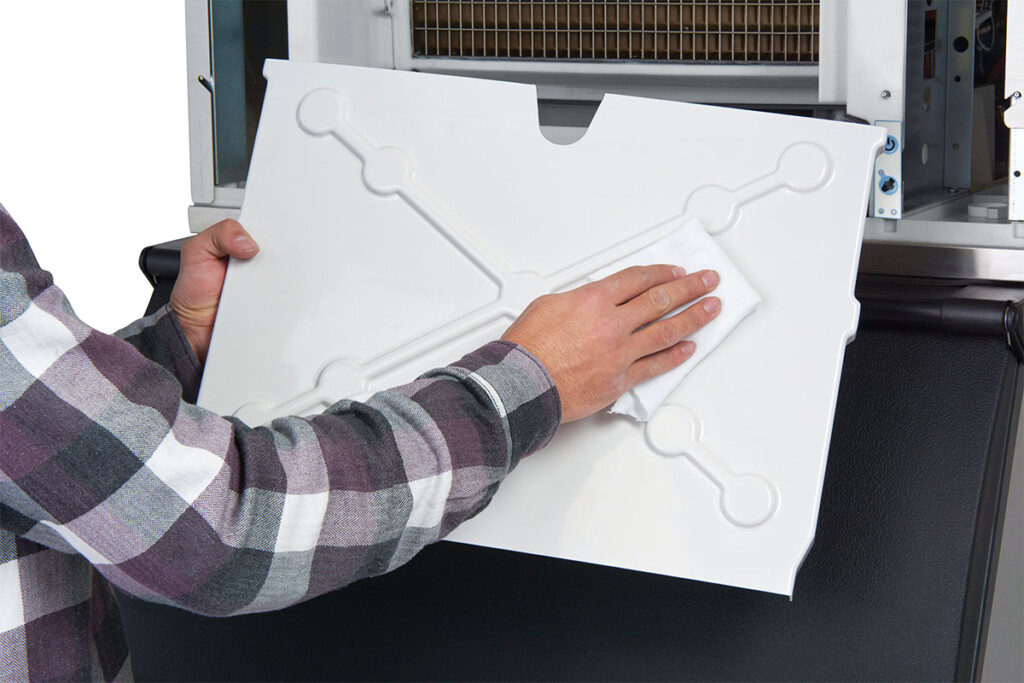
Plastic food zone parts snap in and out and can run through the dismachine. Courtesy of Ice-O-Matic.
Avoid These Mistakes
Easily, the biggest operator complaint about ice machines is performance, specifically production. Often operators will lament there’s never enough ice. Usually, manufacturers say, that’s the result of some commonly overlooked factors when specifying the right ice machine.
Underestimating the need for ice. Don’t forget to look at all the ways in which you use ice when you estimate daily ice requirements. When you take into account beverage service, bar service, cold food displays or grab-and-go cases, ice chests for beverages, and ice baths for cooling food for storage among other uses, you may need to upsize your machine or purchase an additional machine to produce enough ice.
Restricting the ice machine’s ability to breathe. Where you put your ice machine will impact how it performs. Just because the machine measures 22-inches wide, for example, doesn’t mean you can jam it in just anywhere. Air-cooled, self-contained units need ventilation. Many models now breathe from the front and side or top and side; make sure the model you choose can breathe in the location where crews install it.
Forgetting to take the temperature of the room. Ambient conditions have a major effect on ice machine performance. The hotter and more humid the conditions, the harder an ice machine has to work to make ice and the less ice it produces. If you locate your ice machine in a hot kitchen, or if your store is in the south, you should consider upsizing the machine you specify. An increase of 10°F in ambient temperature generally causes a 10% loss in production.
Picking the wrong bin. Self-contained models pair an ice-making head with an appropriately sized bin, but it might not be the right bin for your application or operation. If the bin is too small, you won’t be able to meet demand during peak times. If it’s too large, your ice machine will work too hard to keep the bin full and require service more often. In general, you should pick a bin large enough to meet peak demand; an ice machine with a slightly lower daily production capacity might suffice by allowing the machine to fill the bin during off-hours or slower days.
Coming Attractions
Manufacturers say they have new developments on tap this year in all categories. Here are a few you could see at The NAFEM Show in August:
- New filtration options to improve water quality and machine performance.
- A new mobile app to control and monitor ice machines.
- A new cube ice maker that makes 2-in. x 2-in. specialty cubes.
- New technology addressing operator concerns about safety and reliability.
New Ways to Use Ice
As operators have encountered ever-evolving guidelines during the pandemic to keep customers and employees safe, ice machine makers are helping them shift gears and find new ways of doing business safely. One manufacturer, for example, posted restart information on its website to give operators information on how to properly get ice machines up and running again after a restaurant closure.
Makers say different ways operators are using ice machines during the past year include:
- Using countertop ice dispensers instead of traditional self-contained floor-standing units. Where feasible, operators are switching to dispensers to keep hands out of ice bins.
- Pairing hotel ice and water dispensers with midsize ice-making heads as hydration stations in B&I accounts and cafeterias to replace traditional water fountains. One manufacturer has a lever-activated dispensing mechanism on its dispensers so guests don’t even have to touch the controls.
- Adding multiple ice machines in different locations. Using two or three midsize cubers instead of relying on production of one large machine puts ice where it’s needed. Often, operators are adding them to support drive-thru sales, especially units with multiple drive-thru lanes.
- As operators add specialty beverages to takeout menus to drive interest, sales and profit, some are adding additional ice machines, such as midsize cubers or specialty ice machines that make spheres or oversize cubes.
- Bagging ice for sale. While bagged ice kiosks are an entirely different industry, some operators are using excess ice-making capacity as a result of closed on-premise dining to bag and sell ice to customers.
Here and There
Cube ice makes sense in many places throughout your operation. Turn here to start your search for a small to midsize cube ice machine.
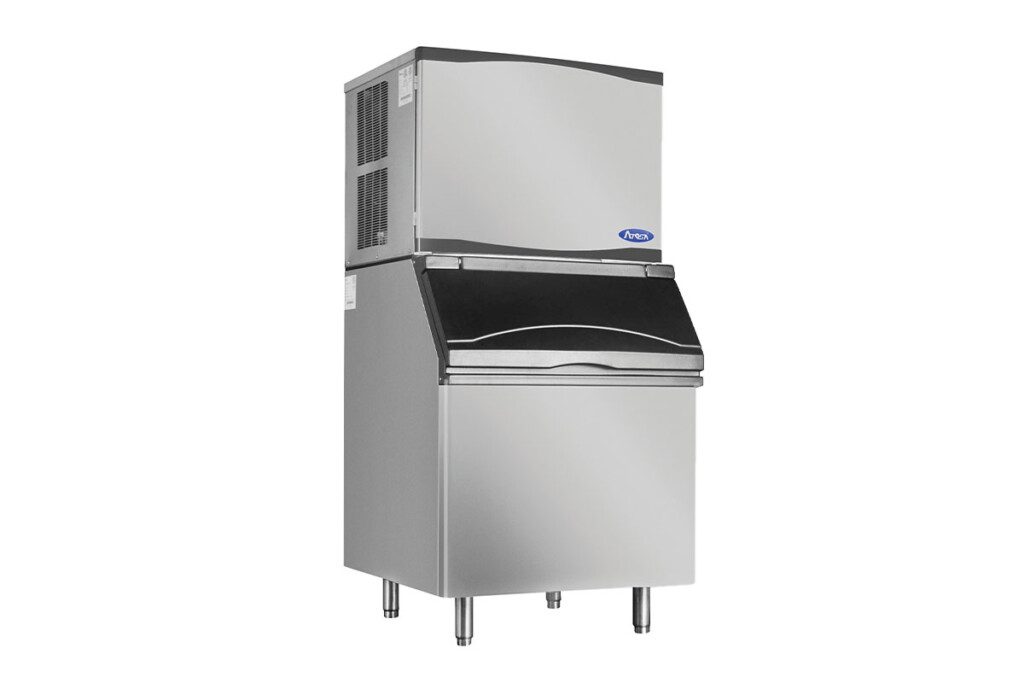
Atosa
Model: YR450-AP-161
Features: Unit comes with a removable air filter and a power switch that’s accessible without removing the panel.
Dimensions: 30⅕-in.W x 24 9⁄20-in.D x 21 7⁄10-in.H
Website: atosausa.com
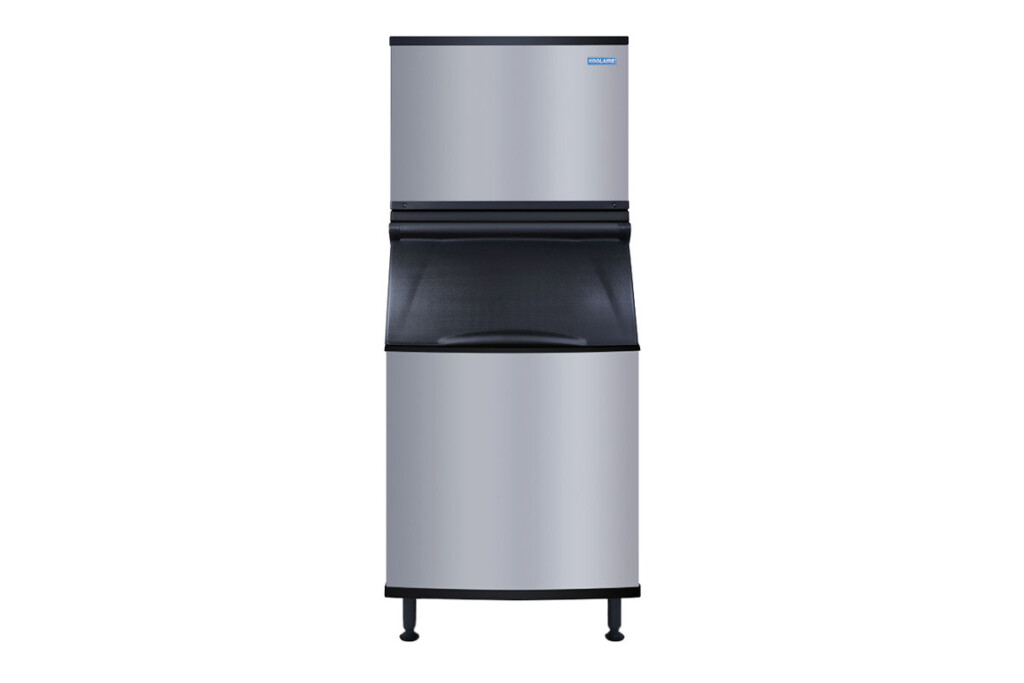
Koolaire
Model: KT-0500
Features: Certain components come infused with an antimicrobial agent on this machine. One control with three settings (on, off and clean) make the machine easy to operate.
Dimensions: 30-in.W x 24-in.D x 21½-in.H
Website: kool-aire.com
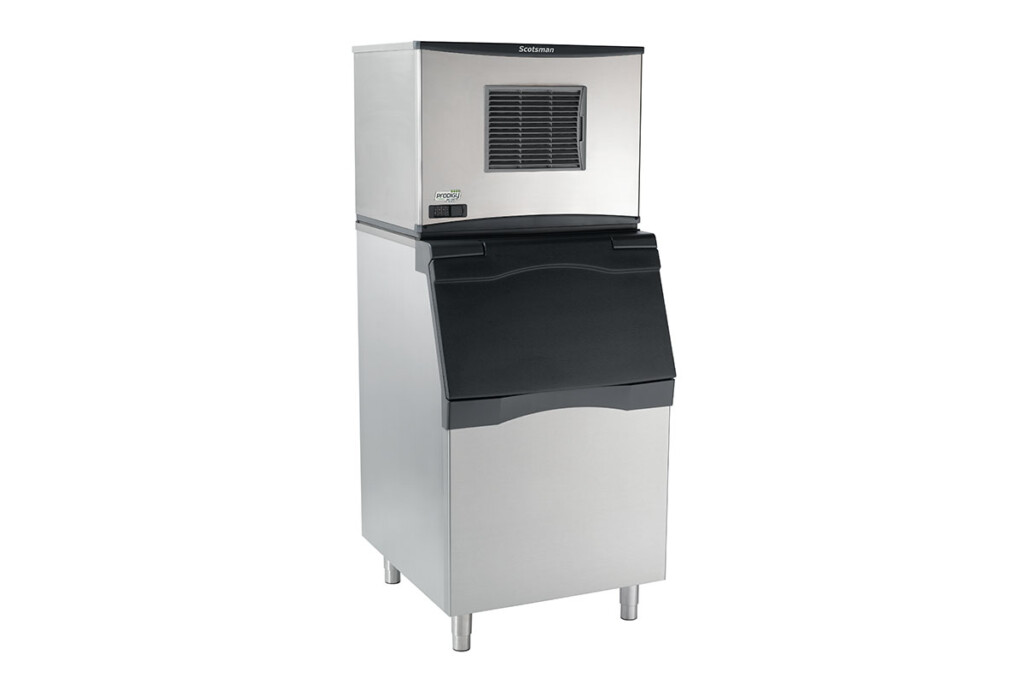
Scotsman
Model: Prodigy Plus C0530
Features: Unit boasts status indicator lights, a QR code that instantly connects users to service information and antimicrobial protection.
Dimensions: 30-in.W x 24-in.D x 23-in.H
Website: scotsman-ice.com
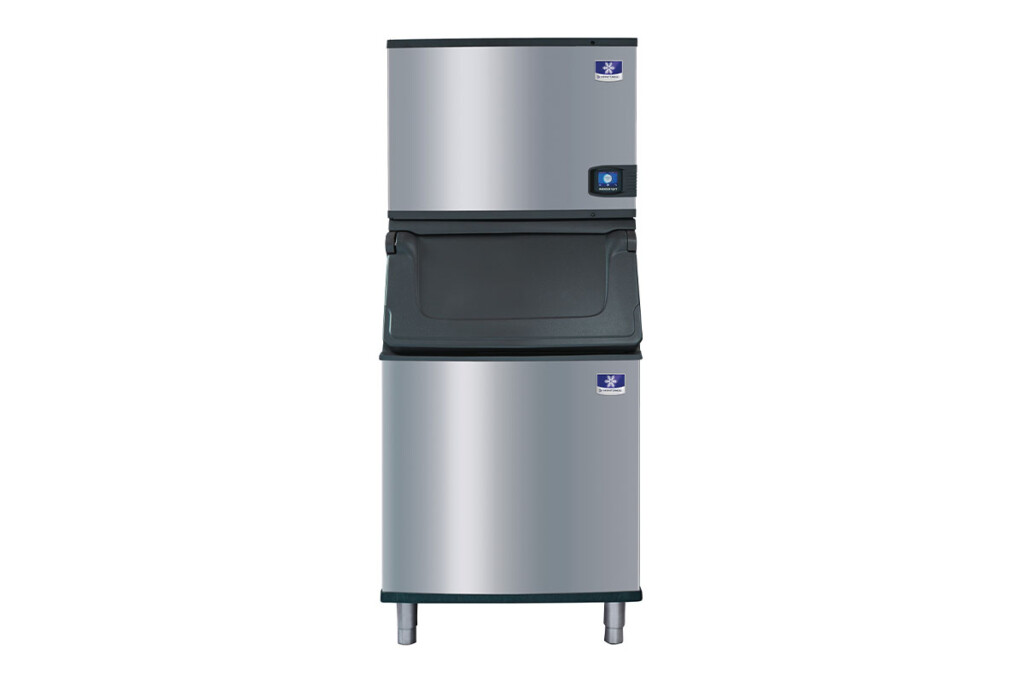
Manitowoc
Model: Indigo NXT Series iT0500
Features: This cuber comes with an icon-based touchscreen display, programmable ice production and antimicrobial components. Optional UV light technology controls viruses and bacteria in the ice machine.
Dimensions: 30-in.W x 24-in.D x 21½-in.H
Website: manitowocice.com
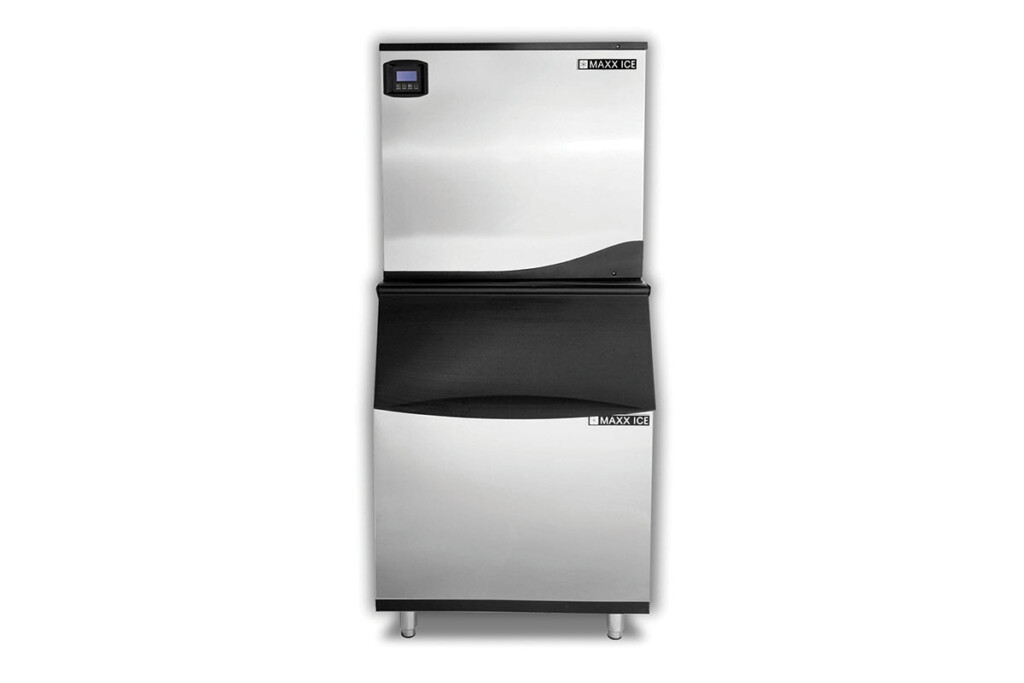
Maxx Ice
Model: Intelligent Series MIM500N
Features: The stainless with black trim exterior features a hinged front panel for easy cleaning and servicing. Unit comes with programmable digital controls.
Dimensions: 30-in.W x 24½-in.D x 21-in.H
Website: maxx-ice.com
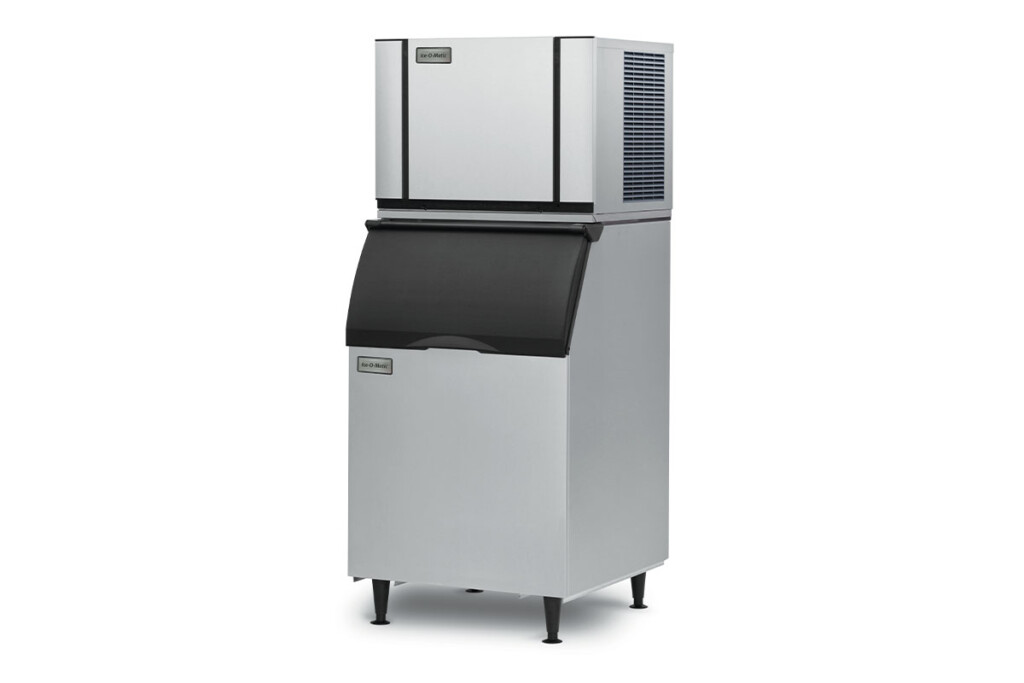
Ice-O-Matic
Model: Elevation Series CIM0520A
Features: Unit comes with antimicrobial protection, one-touch controls for sanitization and descaling, and an LED light that indicates when to clean it.
Dimensions: 22¼-in.W x 24¼-in.D x 21¼-in.H
Website: iceomatic.com
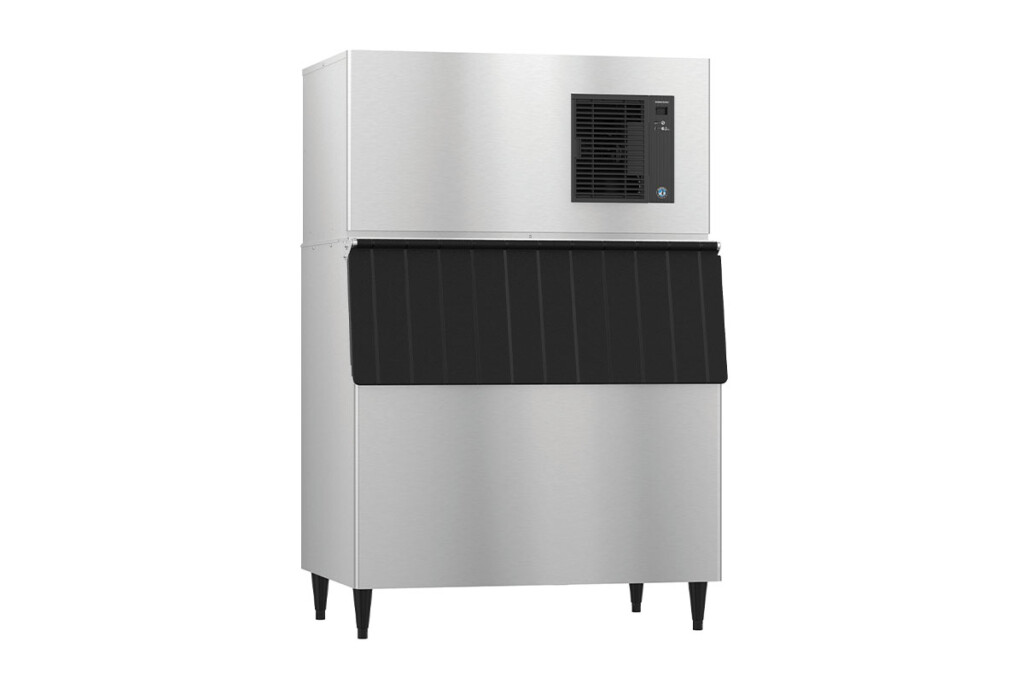
Hoshizaki
Model: IM-500SAB
Features: Stack this specialty ice machine two to three units high and increase ice production in the same floor space.
Dimensions: 44-in.W x 27⅝-in.D x 21¾ -in.H
Website: hoshizakiamerica.com
RELATED CONTENT
- Advertisement -
- Advertisement -
- Advertisement -
TRENDING NOW
- Advertisement -
- Advertisement -
- Advertisement -

